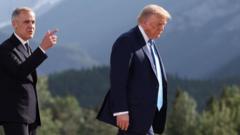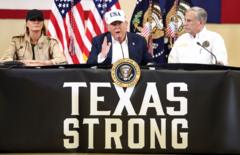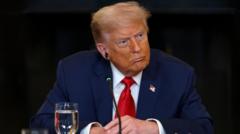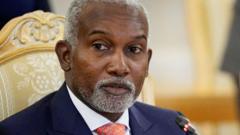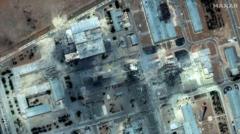Delays in tariff implementation signify a struggle for the Trump administration to negotiate trade agreements, as global partners respond defiantly to U.S. policy.**
Trump Postpones Tariff Implementation Amidst Global Trade Tensions**
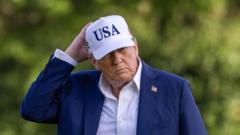
Trump Postpones Tariff Implementation Amidst Global Trade Tensions**
The U.S. administration faces challenges in finalizing trade deals as other nations push back against unilateral tariff actions.**
Donald Trump’s administration has extended the deadline for new tariff implementations, raising questions about the viability of the promised trade deals. Initially heralded with the ambitious slogan "90 deals in 90 days," the reality has seen the deadline slip from Wednesday to August 1, with further delays likely. Economic indicators suggest a shift in dynamics, as Treasury Secretary Scott Bessent emphasizes that focus remains on 18 countries responsible for the majority of America's trade deficit.
The U.S. administration's strategy has been met with resistance, particularly from Japan and South Korea, who have reacted with displeasure towards what they perceive as aggressive posturing. Japan's finance minister hinted at leveraging its significant holdings of U.S. debt as a counter.
Despite earlier market jitters related to potential trade warfare, financial markets seem to have absorbed the news of the delay without immediate turmoil. However, the current status highlights the administration's struggle to secure solid trade agreements, indicating a recognition of setbacks.
Trade statistics reveal a stark contrast in global exchange patterns; while exports from China to the U.S. have dropped, its export figures to other regions, including a substantial rise to the UK and ASEAN countries, showcase the reorganization of international trade relationships. As tariffs begin to generate revenue for the U.S., the long-term implications of a newly erected tariff wall indicate a shift towards increased inter-trade between other nations.
Currently, the effective tariff rate levied by the U.S. stands at approximately 15%, a significant hike from a historical average of 2-4%. This evolving landscape in international trade calls for investors and policymakers alike to pay close attention to how these trade negotiations unfold moving forward, particularly as market responses could change dramatically with new developments.




